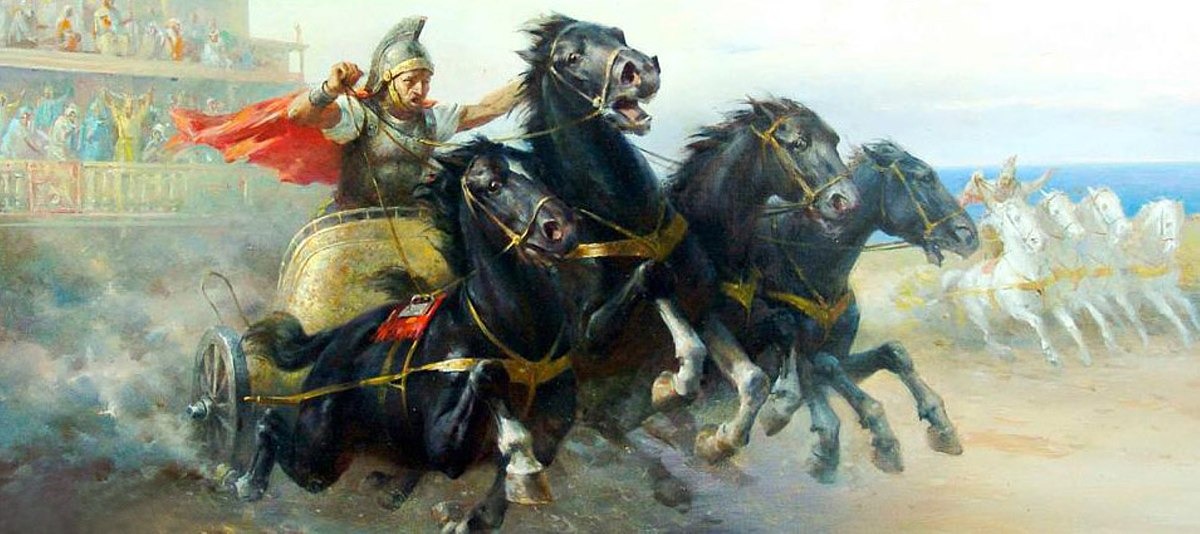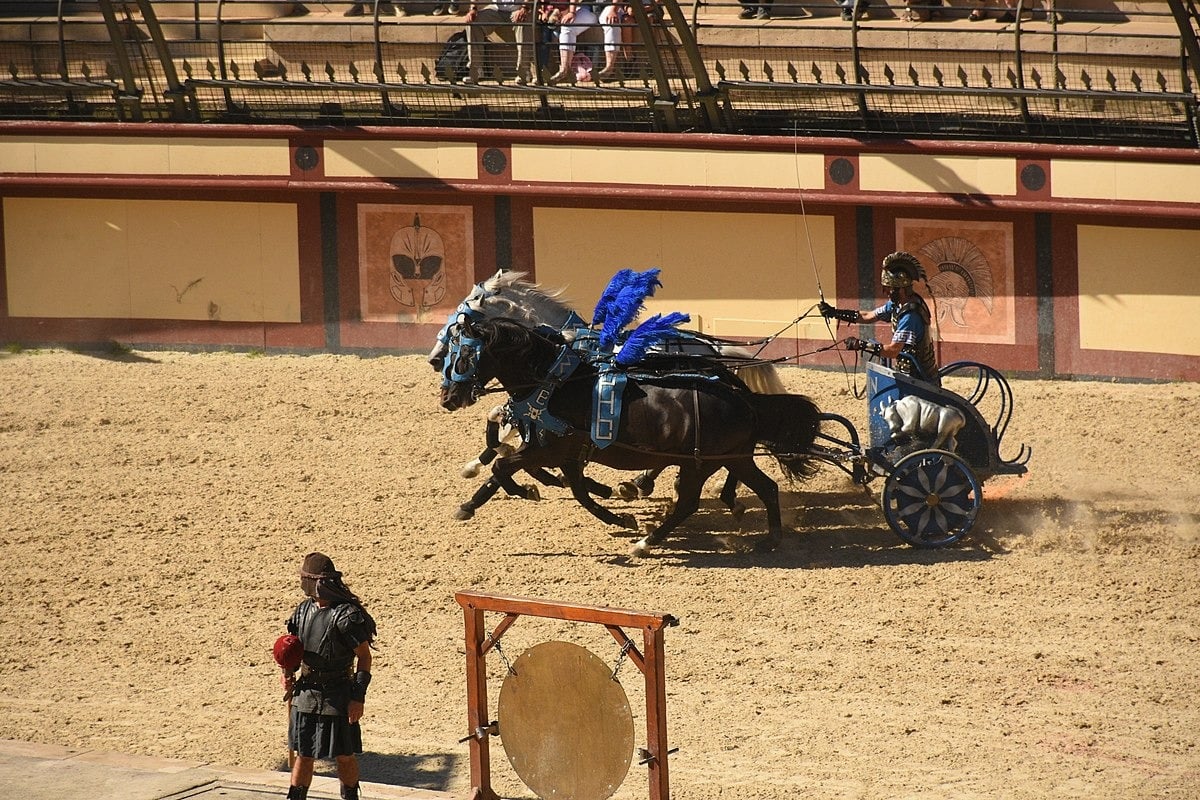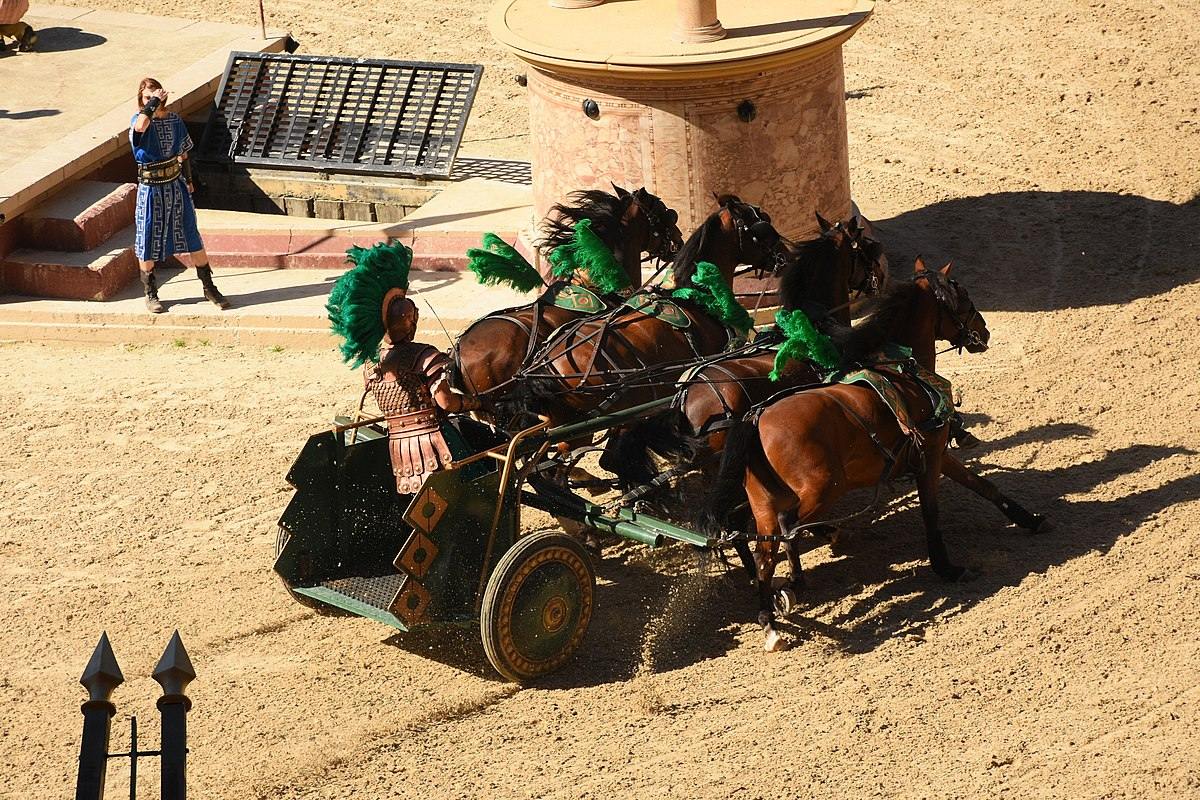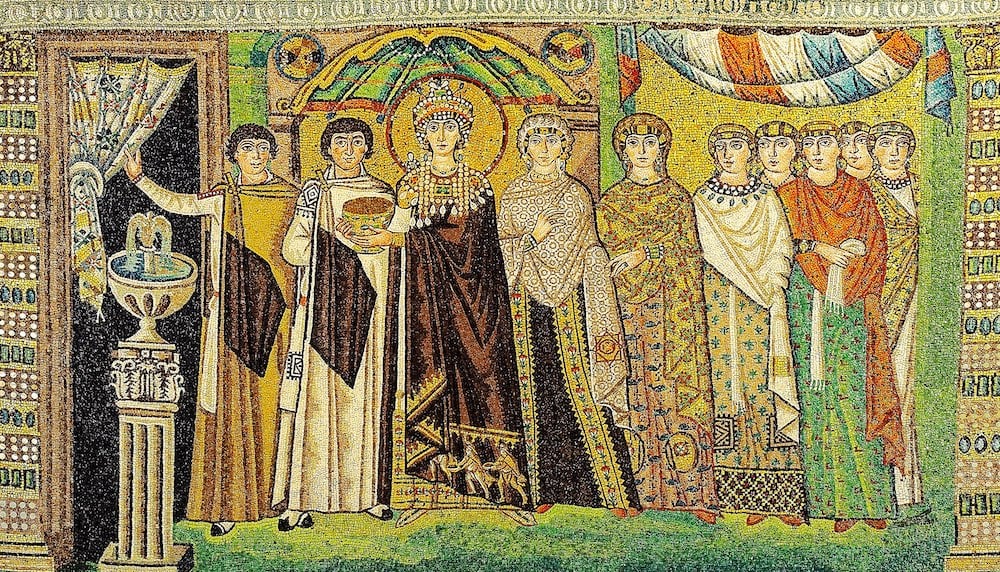
The Greek world has a troubled past of sports riots, particularly with football hooliganism, but this pervasive history goes back further than one might expect, with one instance nearly leading to the destruction of Constantinople and the overthrow of the Eastern Roman emperor.
The Nika Riot (alternatively referred to as the Nika Revolt or Nika Uprising) in 532 AD was one of the deadliest riots in human history and certainly the worst to have occurred in the period of Late Antiquity. It led to the deaths of approximately 30,000 people.
The riot occurred during the rule of the Roman Emperor Justinian I and was largely instigated by the city’s two major chariot racing teams – the Blues and the Greens.

Blues vs. Greens
During the era of the Roman Republic, chariot races showcased four teams distinguished by color: the Reds, Whites, Greens, and Blues, each enjoying fervent and devoted followers. As the sixth century AD arrived, with the decline of the western half of the empire, only a pair endured— the Greens merged with the Reds, and the Blues assimilated the Whites. These two surviving factions maintained immense popularity within the Eastern Roman (Byzantine) Empire, centered in Constantinople. Their enthusiasts remained as passionate as before, often becoming the instigators of violent and tumultuous riots.
The exact ideologies of the Blues and Greens remain debated by historians. Previously, they were believed to have transformed into early political factions over time—the Blues symbolizing the elite and religious orthodoxy, while the Greens were associated with the common people.

In the 1970s, the historian Alan Cameron challenged the view that the nature of the rivalry between the Greens and Blues was of a political or religious nature. Cameron’s argument was based on the fact that the games themselves were a perfectly adequate tinder box to light the fires of violence between the two teams.
For instance, in 501 AD, the Greens staged an ambush against the Blues within Constantinople’s amphitheater, resulting in the slaughter of 3,000 Blues supporters. In Antioch, four years later, a riot erupted due to the victory of Porphyrius, a Green charioteer who had switched allegiances from the Blues.

Chariot racing in Byzantium
The fact that sports and chariot racing, in particular, were of great importance in the Eastern Roman Empire is made evident by the fact that the Hippodrome in Constantinople was located just next to the Imperial Palace with a private walkway enabling the emperor and his retainers to walk directly to his private box.
The Hippodrome was central to the political and social life of Constantinople. Estimates regarding the Hippodrome’s seating capacity range from 30,000 to 60,000. Due to its size and capacity for a large audience, it was the ideal place for the emperor to address the population, hold ceremonies, or have political enemies executed. Nevertheless, the main attraction remained the chariot races, which would have generated an exciting buzz amongst the fans.
According to historian T. E. Gregory “The fans often engaged in organized chants or shouts, they commonly wore outlandish and immediately identifying clothes and haircuts, and they sometimes engaged in violence, especially against members of opposing factions. This violence not uncommonly spilled outside the hippodrome into the streets.”

The Nika Riot
The causes of the Nika Riot appear to have been a mixture of simmering political and social tensions in Constantinople. These came to a head at the Hippodrome where the emperor was met with jeers and insults from the crowd.
Following the failed execution of two circus faction members arrested for murder, both the Blues and the Greens sought clemency from Emperor Justinian I. He altered their sentence to imprisonment but did not grant a full pardon.
Justinian’s attention was absorbed by urgent diplomatic negotiations with Sassanian Persia, Rome’s rival, and preparations for the imminent grand chariot races at the Hippodrome. On January 13th, 532 AD, the populace assembled at the Hippodrome, renewing their plea to the emperor.
Justinian again refused, leading to dire consequences. The two rival factions, the Blues and the Greens, who had perpetually clashed, forged an uncommon alliance. In unison, the populace began chanting “Nika,” signifying “victory” or “conquer” in Greek. This chant, previously employed to rally behind charioteers at the Hippodrome, now resonated as a collective reproach directed towards the emperor.

In the face of an incensed mob, Justinian and his entourage retreated from the Hippodrome to the shelter of the Great Palace walls. The emperor’s retreat served to embolden the mob, which promptly spilled onto the streets of Constantinople.
The seething crowd launched their initial assault on the praetorium, the very site housing the prison. There, they unshackled the detainees and left the building engulfed in flames. As dawn broke on the following day, January 14th, Justinian reappeared at the Hippodrome, his last-ditch endeavor to quell the unrest. This time the emperor yielded to the rioters and agreed to the ousting of the deeply unpopular Prefect John the Cappadocian and Quaestor Tribonian from their positions.
By now, however, the rioters were beyond reconciliation. A great fire spread across the capital, engulfing several important buildings such as the Hagia Sophia and the Senate House. Meanwhile, Justinian remained barricaded inside his palace.
The situation was made worse still by members of the Senate who opposed Justinian. With the riots in full swing, they saw an opportunity to depose the emperor and replace him with a candidate more favorable to their interests. Their choice fell upon Hypatius, who happened to be the nephew of the former emperor Anastasius.

The rioters are crushed
Powerless to quell the Nika Riot, which had morphed into an outright rebellion, Justinian devised a plan to escape the capital. According to historian Procopius, it was at this juncture that Empress Theodora intervened, reprimanding her husband and delivering a poignant line: “Royal purple makes a fine burial shroud.
Meanwhile, the Thrace garrison had arrived in Constantinople and was ready to intervene. On January 18th, Justinian entrusted Generals Belisarius and Mundus with the leadership of the troops, tasking them with crushing the rioters at the Hippodrome.
The same grand chariot racing arena that witnessed the inception of the Nika Riot became the site of its brutal suppression. The soldiers effectively barricaded all exits and slaughtered those inside. When the day concluded, a staggering death toll of approximately 30,000 had accumulated.
Justinian had the ringleaders and conspirators executed, among them his rival Hypatius. He then secured his political positions and rebuilt Constantinople. Thus ended one of the bloodiest sports riots in human history.
See all the latest news from Greece and the world at Greekreporter.com. Contact our newsroom to report an update or send your story, photos and videos. Follow GR on Google News and subscribe here to our daily email!



